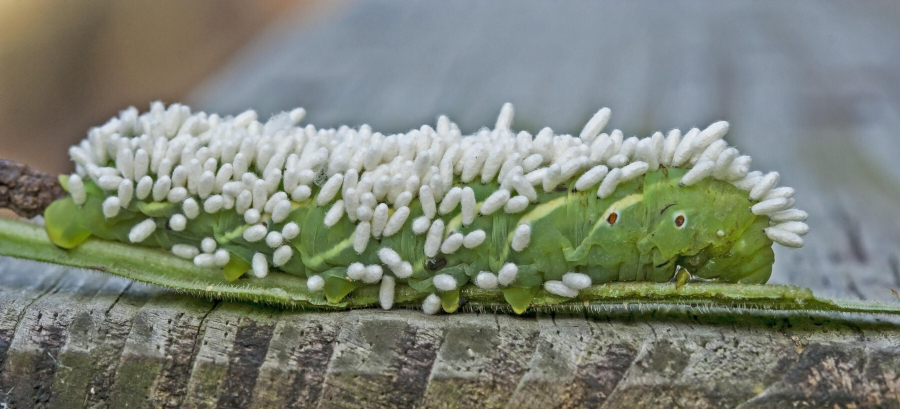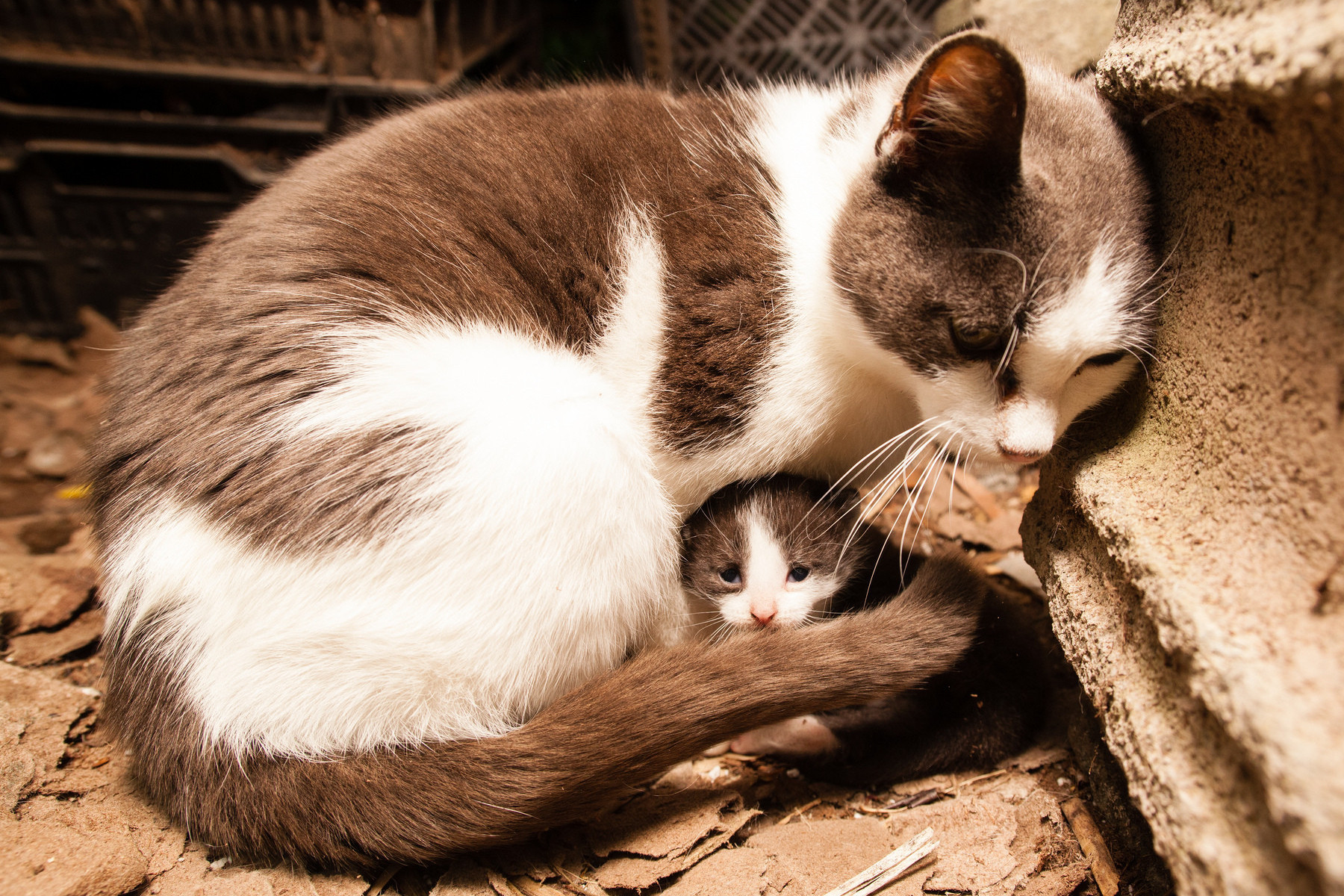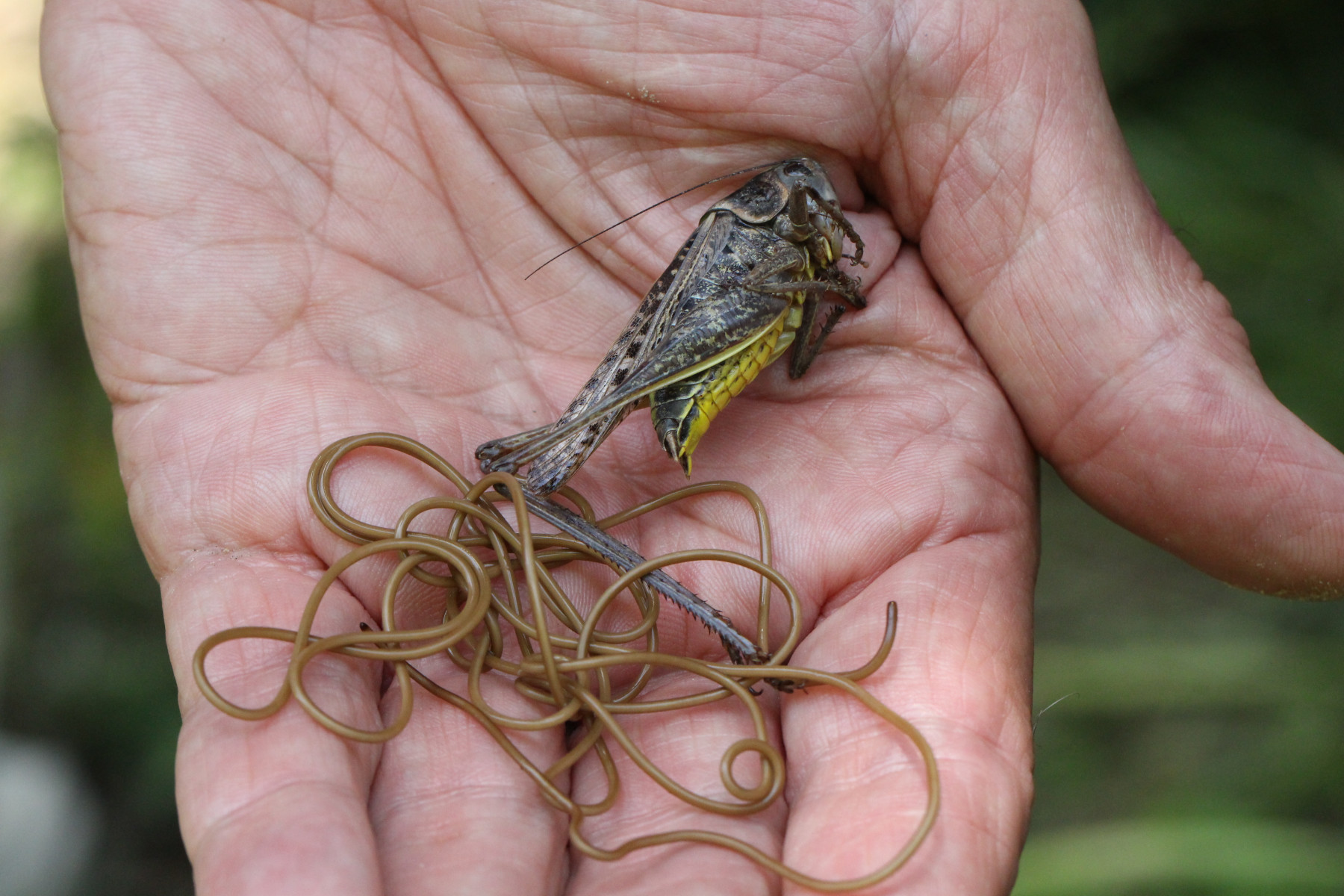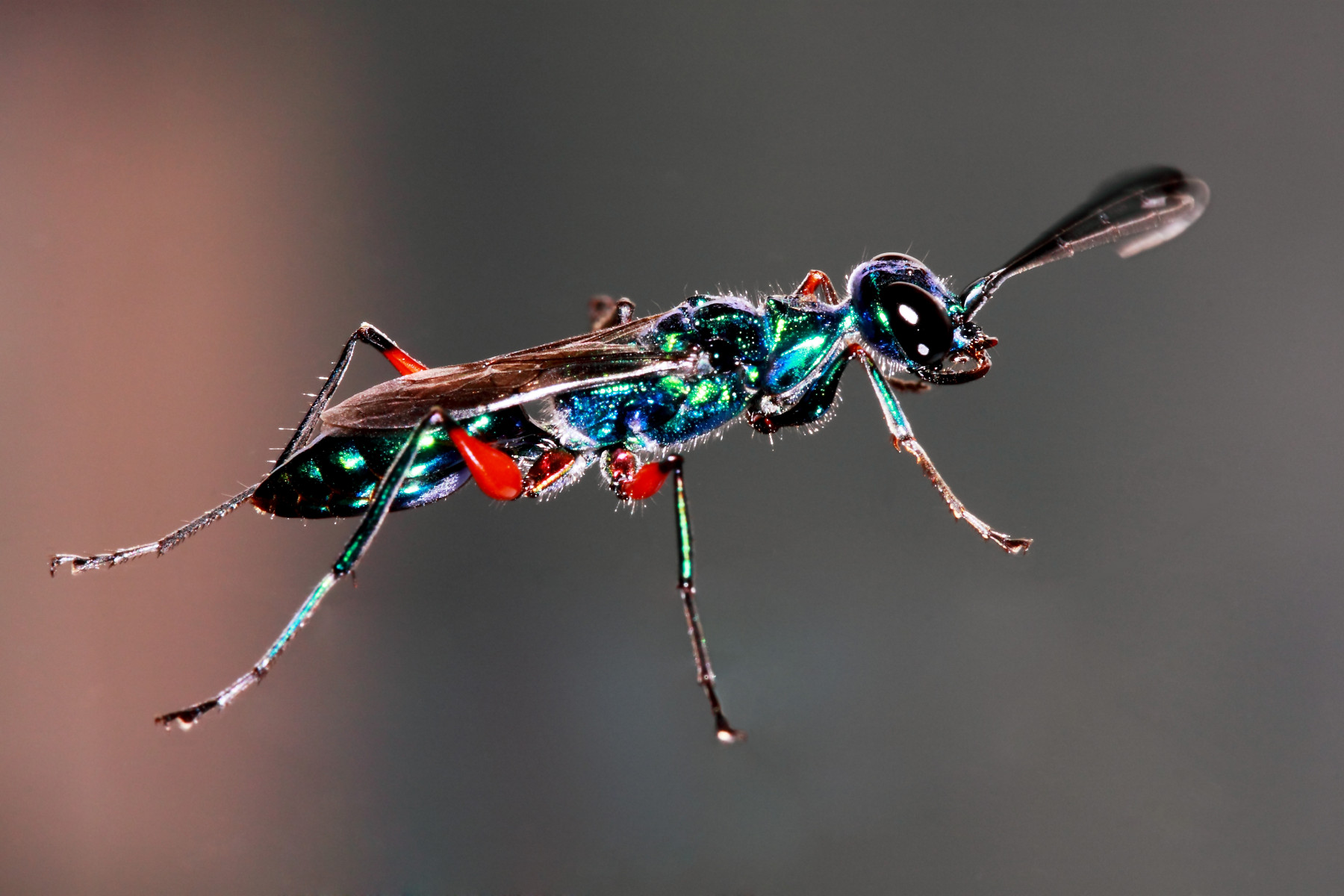Nature’s body snatchers

The most disturbing stories begin not on a dark and stormy night, but with the phrase: “it was a warm, sunny day in a flower garden.” While humans admire the smells and colors of spring, horrific scenes of torture, attack and hijacking may be taking place.
The most brutal tales of body snatching are not in the far corners of the exotic world, but can be found right here at home in the Chesapeake.
Ladybug parasite
.jpg)
Have you ever seen a ladybug holding a puffball? It isn’t nearly as innocent as it appears. The parasitic braconid wasp, Dinocampus coccinellae, turns a ladybug into a paralyzed incubator, food source and bodyguard.
The wasp inserts an egg into the underbelly of the ladybug with a single sting. The wasp larva, in a safe and protected home, feasts on the ladybug’s insides.
When the larvae is ready to hatch, it employs a neurological weapon: a virus. The virus was injected into the ladybug at the same time as the egg and while it grew, the virus did, too. The virus builds up in the brain cells, and will burst open at about the same time that the wasp larva chews its way through the ladybug's insides and bursts out its stomach.
Affected both physically and neurologically by the wasp and virus, the ladybug is paralyzed. It can only twitch as the wasp larva spins a puffy cocoon on the belly of the ladybug.
The ladybug then “guards” this puffy cocoon while it is vulnerable. The ladybug’s bright red back and occasional twitching keep predators away. The adult wasp emerges from the puffy cocoon about a week later.
Most of the ladybugs die from this encounter, though some are able to recover and survive. The quality of remaining life for the ladybugs that survive or the lasting effects from the experience are not well understood by scientists.
Braconid wasps
Wasps are important biological controls, which means they keep various caterpillars, worms, spiders and other insects that eat plants in check. If you’re a fan of herbs, lush gardens or fruits and vegetables, you should be a fan of wasps. The chilling factor comes in if you look too closely at just how wasps like the braconid keep a cap on caterpillars.
A braconid wasp (Braconidae) will descend on a caterpillar–say, a hornworm snacking on a tomato– and slit into its soft caterpillar body. The female wasp injects the caterpillar with her eggs and a virus, which shuts down the caterpillar’s ability to defend against these intruders.
The wasp larvae deposited into the caterpillar body begin to grow beneath the surface, snacking on the caterpillar innards.
When they’re ready, 80 or so larvae will chew out of the caterpillar’s body with their tiny razor teeth. Each small larva spins a cocoon, covering the caterpillar in little white puffy rice grains. The adult wasp will emerge from the cocoon by cutting a trapdoor cap into the cocoon, then fly away in search of its own fresh host.
Emerald cockroach wasp
The American cockroach (Ampulex compressa) can withstand high doses of radiation, survive underwater for up to 30 minutes and can safely consume almost anything without detrimental effects. It has been on the earth since before the time of the dinosaurs and appears virtually indestructible.
Enter the emerald cockroach wasp: a beautiful, iridescent and gory killer. Instead of spinning a soft home like other insects or finding a nice secluded log to house its young, the emerald wasp picks the body of a living cockroach as its nursery.
Approaching the cockroach from the front, the wasp holds the roach’s head in both front legs the way one might console a loved one, then jabs its stinger into the roach’s brain. The injection paralyzes the roach, at which point the wasp takes the roach antennae in its mouth and leads it back like a dog on a leash to the wasp burrow.
Controlled and docile, the roach sits passively while the wasp creates a cage out of pebbbles around the roach.
After laying eggs in the roach’s stomach, the roach is eaten alive from the inside by wasp larvae. Once they’ve eaten their fill and grown up in the cockroach’s body cavity, adult wasps burst from the remains of the roach.
Protozoa parasite

This mind-altering parasite lives in the bodies of rats, mice and other rodents, but it can only reproduce in the digestive system of a cat. To make the leap from rat to cat, the protozoa parasite (Toxoplasma gondii) changes the behavior of the rodents by manipulating neurochemical pathways in their brains.
The rodents lose their sense of caution and aversion to the scent of cat urine, which makes them move further out into the open and become reckless. Naturally, this behavior makes infected rodents far more likely to be caught and eaten by a cat, where the parasite can begin reproducing.
Because cats can be a carrier of this parasite, as much as 40% of the human population is also infected. The infection rate is 11% in the United States population, and as high as 60% in other areas of the world.
The parasite causes the condition toxoplasmosis in humans, which usually causes a mild fever and eye irritation. While it is rare to manifest so severely, in infants it can cause severe eye and brain damage.
The real danger of toxoplasma is yet to be seen, as we are only just beginning to uncover the neurological effects. Recent studies have found that infected humans display the same behavior as rodents. They take riskier behaviors and are more volatile and violent.
A recent paper in Biological Sciences shows that psychological disorders may run on many of the same pathways as parasitic infections. People with high infection rates of toxoplasma are more likely to develop behavior disorders and to have children that eventually develop schizophrenia.
A study in Denmark showed that even in those with no history of mental illness, women infected with toxoplasma were 56% more likely to commit self-directed violence. Those with the highest levels of antibodies (indicating a more severe infection) were 91% more likely to attempt suicide than uninfected women.
It is unclear whether it is the parasite itself, the body’s immune response or some other factor that is the direct cause of behavior changes, but the relationship exists, making Toxoplasma gondii one of the scariest, and most versatile, of our backyard bodysnatchers.
Horsehair worm

A horsehair worm (Paragordius) begins its life harmlessly enough but grows to terrorize its host. Starting out as white strings of eggs in the water, horsehair worms hatch into free-swimming larvae and infect an aquatic host, such as a mosquito larva.
Within a few days, the worm larvae take the form of a cyst and the mosquito lives its life as an infected carrier until it is eaten by a cricket. Though the mosquito dies in the encounter with the cricket, it may be the luckier of the two insects.
Now inside the body of the cricket, the larval cyst grows into an adult horsehair worm, where it takes up most of the cricket’s body. The horsehair worm grows into a thin, twisted creature that’s an average of a foot long. Now cramped for space, this aquatic adult worm needs to get to the water.
Crickets normally avoid water, but an infected cricket host is controlled by its worm parasite. The cricket will head in the direction of water by using its antennae to pick up changes in humidity. The parasite will force the cricket to leap without hesitation to a watery death.
The worm will then bore a hole in the drowned cricket, squiggle out into the water, and immediately seek out a mate.
Sometimes, nature can be cruel.


Comments
Sounds like sometimes science fiction isn't always fiction, but science non-fiction. I wonder if this where they got some of their ideas for movies like Alien.
I had the typical hornworm caterpillar on a branch of my tomato plant, and, sure enough, it was host to those tiny wasps, which emerged as little white eggs on the host.
BUT THEN, before they could emerge from their eggs and fly away, a wasp swooped in and started eating the eggs! What's THAT about?
I do have the videos to prove it.
I wish I hadn't started reading this! Now I have lost my sleep.
The animal kingdom is fascinating
Thank you!
Your comment has been received. Before it can be published, the comment will be reviewed by our team to ensure it adheres with our rules of engagement.
Back to recent stories